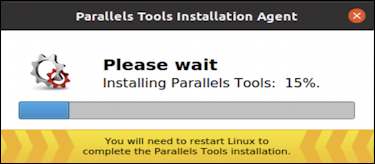
To sign in, use the username and password you setup before.There has been some early success geting Ubuntu up and running on Apple's M1 ARM hardware with using the Apple Hypervisor Framework but it looks like a much better experience is on the way with the forthcoming Parallels Desktop for Apple Silicon. Run sudo apt-get update & sudo apt-get upgrade to get the latest list of packages. The installation process should be complete. The installation process will ask if you want to install any recommended software (such as software to make your computer into a DNS server). When partitioning your disk, you can use guided partitioning, which should partition all of the space Parallels allotted for that VM.

There is no GUI, all steps are completed through the textual user interface. It should now show a check mark next to the name.Ĭontinue proceeding through the Ubuntu Server installation process. Click the USB icon, and then click on the specific USB drive you inserted into your computer. In the Parallels menu at the top of the window, allow Parallels access to the USB drive you inserted.

The contents of the USB drive should not matter. Select US/English for the first two prompts, and then insert a USB drive into your computer. You will see multiple localization prompts about which language to use, which keyboard layout to use, etc. If you use Parallels, you will need to make a Parallels account to use the software. iso file if you would like, but Parallels has been tested and is confirmed to work. You can use another VM software that can load an. Therefore, the recommended way to install Ubuntu 18.04 is to use a virtual machine.ĭownload Ubuntu 18.04 Server for ARMv8.

Installing Ubuntu 18.04 on an M1 Mac can be challenging, as the device does not permit dual booting another operating system. Installing Ubuntu 18.04 on a Mac with an M-series processor (M1) ¶ Network with Vehicles and Simulation Servers.

Resetting Ubuntu Administrative Password.Installing Ubuntu 18.04 on an M-series Apple computer.


 0 kommentar(er)
0 kommentar(er)
